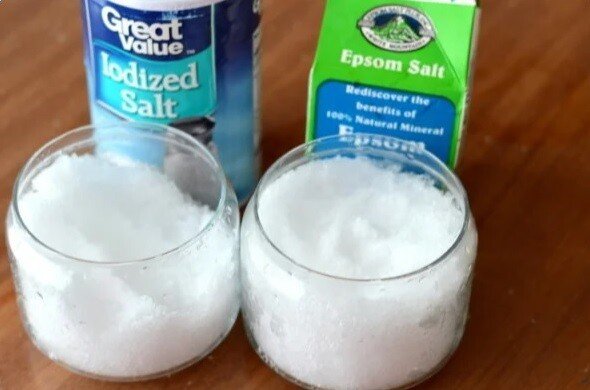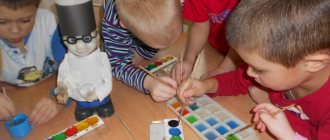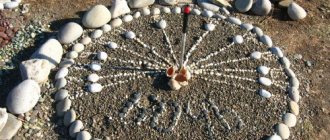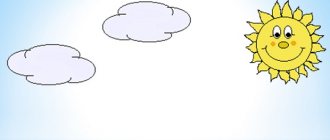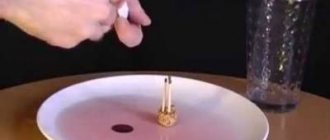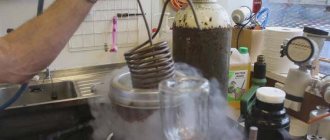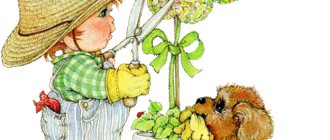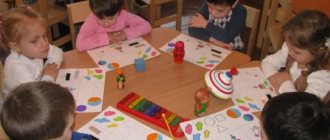Snow, ice. Experiments with ice and snow
Contained in sections:
Experimental activity “Artificial snow”
Our first
experiment “Artificial
Snow ”
experiments from Simple Science on sale I bought it for the kids to try and everyone liked doing experiments . In this review I’ll tell you how to get white, crumbly and warm snow .
Summary of the experimentation lesson “Experiments with snow and ice” in the first junior group Summary of the experimentation lesson “Experiments with snow and ice” “Little wizards” in the first junior group Educational area: “Cognitive development” Type of activity: Cognitive and research. Goal: Involving children in elementary research.
Experimental activity “Snow and Ice” Snow is not only winter fun, it is a subject of research that contains so many interesting, curious and attractive things. And most importantly, you don’t have to go far, here it is – the subject of research, under your feet! Amazing is nearby! Children often ask questions: why.
Article “A preschool child is a natural explorer. Experimenting with. »
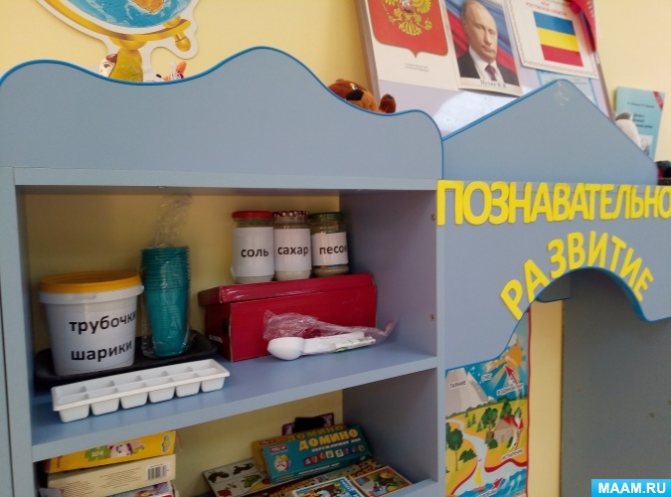
A preschool child is a natural explorer of the world around him. The world opens up to the child through the experience of his personal feelings, actions, and experiences. “The more a child has seen, heard and experienced, the more he knows and has learned, the more elements.
Summary of a lesson on experimental activities in the middle group “Properties of Snow”
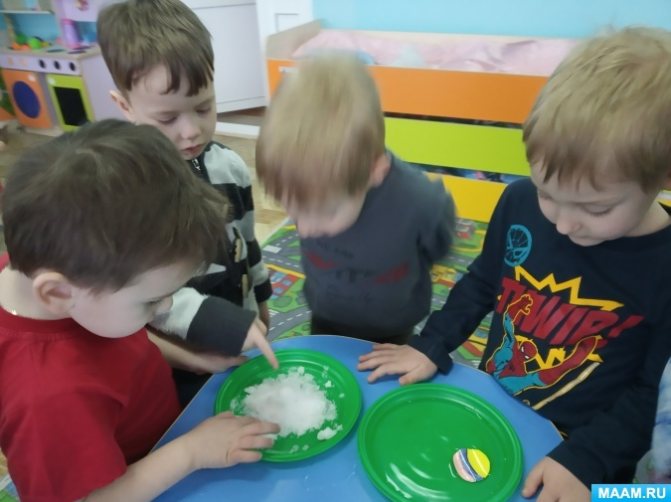
Goal: To familiarize children with the properties of water and snow through experimental activities. Objectives: 1. Systematize ideas about snow and its properties: sticky, cold, wet, melts in heat, turning into water, through examination of the object and experimental activities.
Kids experimenting with ice and snow
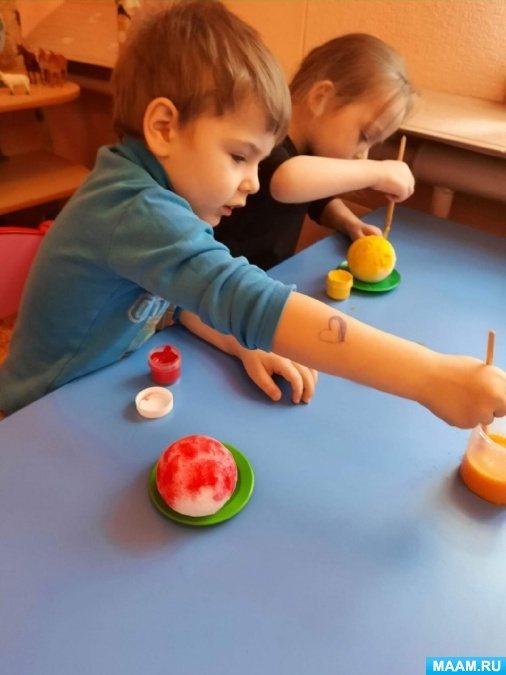
Photo report “Kids experimenting with ice and snow” Experience with snow in the second junior group For the experiment, we needed a container, a snow mold (for an aesthetic look, you can take any mold for snow. Paints (gouache) of any color, brushes, snow. Purpose: to teach.
Source
We get clean ice
Experiment number 6. Stock up on water (regular, salty and sweet). Start by telling the children that although they know ocean water is salty, the ice on the surface of the Arctic Ocean is fresh. During the experiment, together with the children, we will find out how freezing water occurs from impurities in the form of sugar and salt.
To conduct the experiment, prepare several ice cubes in advance. Carefully split each of them in half, obtained from sweet, salty, as well as the most common fresh water. Ask the children - do they think that if we freeze sweet or salty water, we will get the same ice?
Most likely, the answer will be yes. But this is wrong - in fact, the water that crystallizes during the formation of ice gets rid of foreign molecules and impurities. To confirm your words, allow the children to lick the ice pieces and make sure you are right.
Experiments with snow in the senior group
Natalya Medetskaya
Experiments with snow in the senior group
Already at preschool age, children actively explore the world around them and ask their parents many different questions. Winter is an excellent period for conducting experiments with snow . Thanks to them, children will learn to understand how and why many natural phenomena occur.
Goal: developing research and educational interest through experimentation with ice and snow .
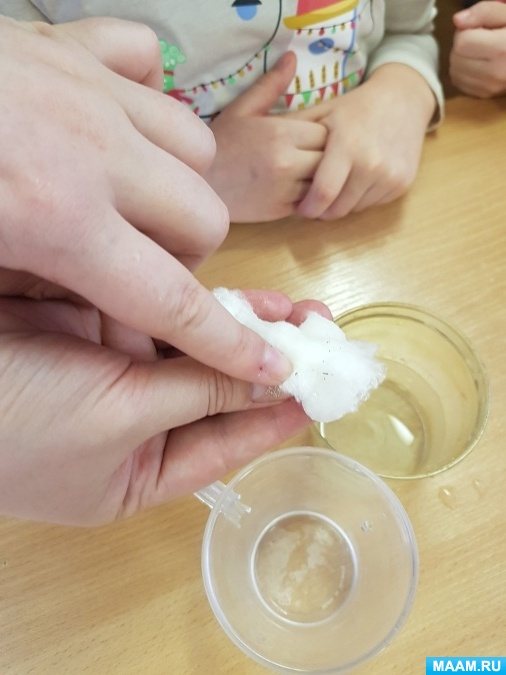
— expand children’s knowledge about winter;
- during experimentation, determine the properties of snow (white, opaque, loose, melts in heat, odorless)
;
— develop children’s ability to answer search questions;
— teach children to put forward hypotheses and test them experimentally ;
- enrich children's vocabulary;
- cultivate interest in experimental activities and the desire to engage in them.
Preliminary work: observing winter phenomena while walking; looking at snowflakes; reading poems, fairy tales, riddles about winter.
Materials for the lesson: snow , a container of water at room temperature, a spoon, 2 glasses, cotton wool, paints.
Are experiments necessary for preschoolers?
What patterns can a kindergarten child understand? We can talk quite confidently about the different states of substances, their transition to other qualities, the characteristics of air, the ability of sand to pass water, and the like.
Experiments for preschoolers help sharpen logical thinking, ability to make comparisons and make correct conclusions. Children learn to formulate their own opinions and defend them.
Each of them should be based on the ideas that the child had at the time the experiment began. Moreover, children should take an active part in the process. When discussing the results with them, preschoolers should be encouraged to express independent judgments. Thanks to simple experiments, children can be introduced to a considerable number of characteristics of water, clay, sand, etc.
As an example, let's look at experiments with ice for kindergarten children, explaining the properties of water, as well as its other well-known state - ice. It would seem that water is a long-familiar and familiar substance to everyone, but how much unknown a child can learn in the course of a well-prepared experiment!
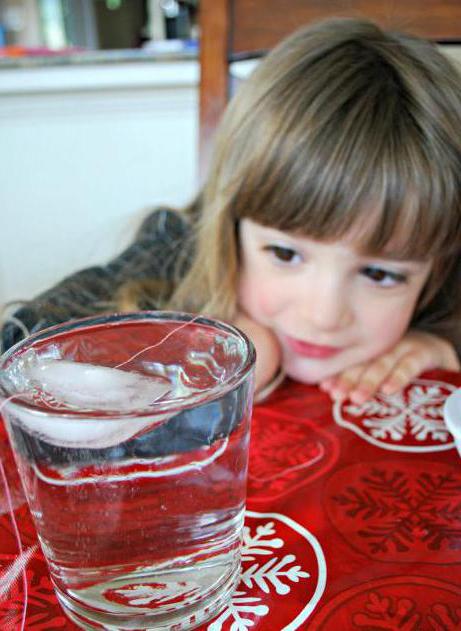
Progress of the lesson:
The snowstorms are swirling, the blizzard is singing songs.
Until the spring drops, all nature will fall asleep.
Cold, snowstorm songs and the road is empty...
And the rivers are encased in a strong shell of ice.
- What time of year is this poem about?
D/i "Snowball"
.
Choose the words to define “What kind of winter is it?”
-how many months in winter? name the winter months; what month is it now? which one will it be? which one was it?
Today we will continue to talk about winter.
It lies quietly all winter, and then runs away ( snow )
What else do you think we will talk about today? (about snow )
Like real scientists, we will engage in research work. Thanks to this work, we will learn a lot of interesting things. Research scientists conduct experiments and make scientific discoveries.
So today we will conduct several experiments and determine the properties of snow .
1. What is snow ?
Snow is a type of precipitation that falls on the ground. It consists of tiny ice crystals. Snow , like rain, falls from clouds. Water vapor rises very high above the ground. The crystal grows all the time and finally becomes a beautiful star. While observing the snow , we note that the shape of snowflakes changes depending on the weather.
Experience 1 . "What does it feel like"
.
snow on our table in a glass . First, look at your palms, how dry are they? Take the snow in your hand and tell me what it is like.
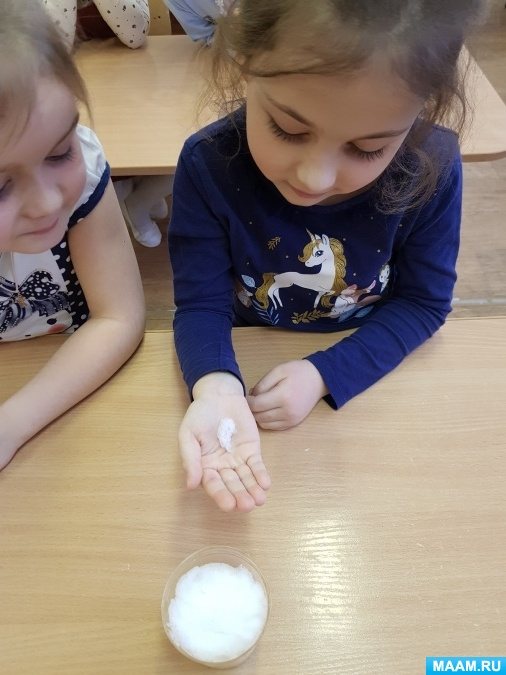
Answers: cold, white, light.
Experiment 2 “ Snow ”
Now let's see what happens to the snow in our hands .
Answer: It melted and turned into water.
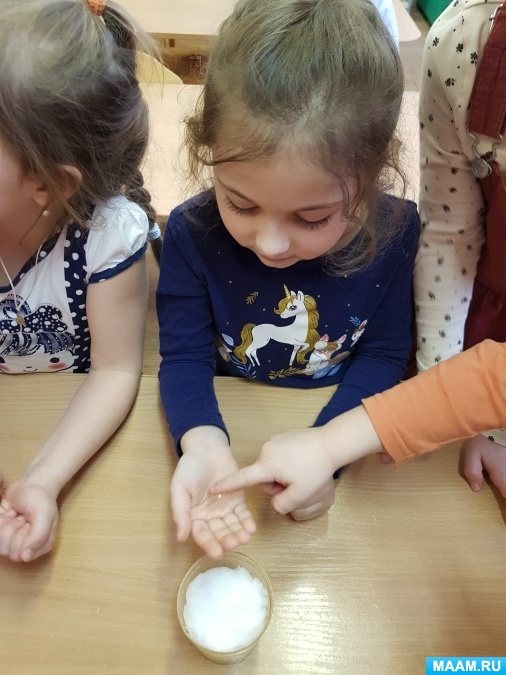
Experiment 3 “Identification of smell.”
Now let's check if ice and snow
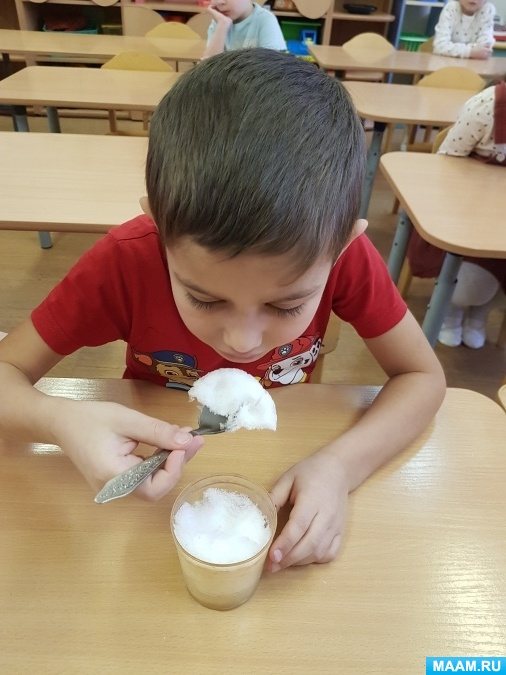
Experience No. 4 . “Is it possible to color snow ?”
.
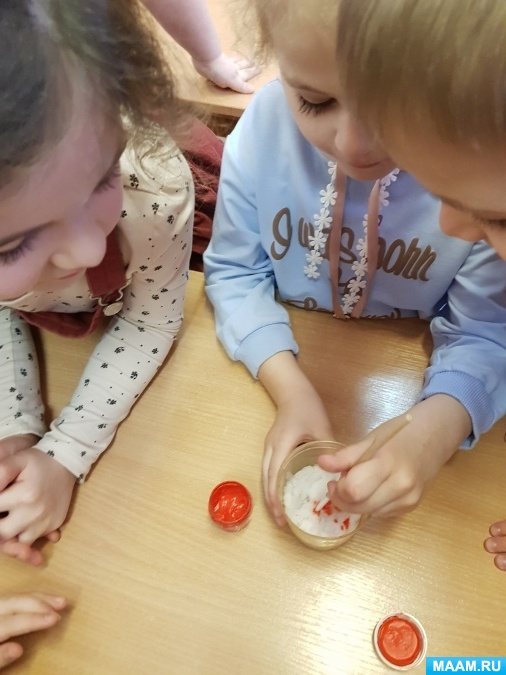
the snow with ordinary food dyes or paints and observe exactly how it will be colored and at what speed the paint will penetrate into the snow layer.
Experiment 5 “Filtering melt water”
We pass the water obtained from the snow through a filter (cotton wool)
. There is dirt left on the cotton wool.
Conclusion: Snow contains dirt . Therefore, snow and snow water should not be eaten as they are very dirty.
Well done! We did a very good job today.
- Guys, did you like being scientists and researchers?
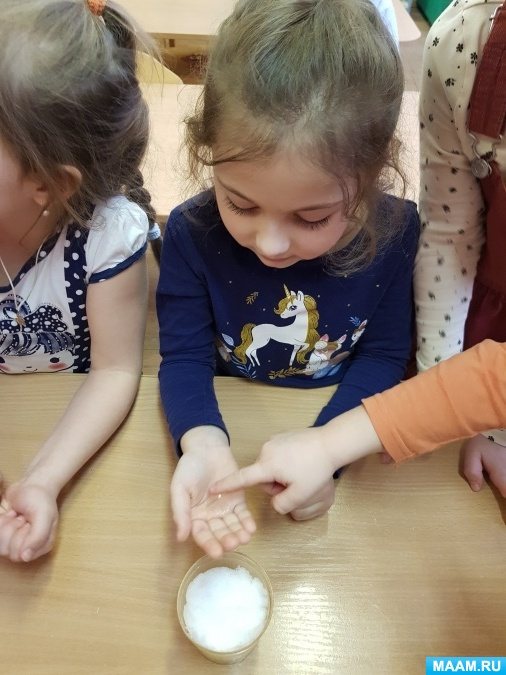
Entertaining experiments with air and water in the senior group. Entertaining experiments with air and water. Goal and objectives: To create conditions for the development of children's interest in experimental activities; Photo report of a walk in the senior group “Observing the first snow” Purpose: Consolidating knowledge about snow as a seasonal phenomenon. Instilling love for the nature of the native land, caring for it. It is snowing,. Photo report “Experimental activities in the senior group. Experiments with water and snow" Experimentation teaches children to observe and draw conclusions, develops thinking and attention. Simple experiments arouse genuine interest in children. Summary of a walk in the senior group “Observing snow and ice” Purpose: • to introduce children to a seasonal phenomenon - snowfall; • consolidate the names and sequence of the winter months • form an idea. Summary of a walk in the senior group “Observing snow in February” Objectives: To form ideas about changes in nature; learn to distinguish the characteristic signs of the end of winter (the first drop); consolidate the skill. Experiments with snow, ice and water (photo report) Hello, colleagues! While it's winter outside, I decided to show the children what happens to snow in a warm room and to water in the cold. Experience.
Source
Second experiment: “Does all water freeze equally?”
For this experiment we took two identical jars. Plain water was poured into one, and a few tablespoons of salt were added to the water in the other. Both jars were placed in the freezer.
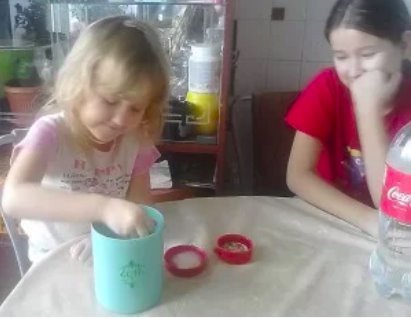
A few hours later we took out both jars and immediately and unmistakably determined which one contained salt water. Ordinary water froze and turned into a piece of ice, but salt water did not even think about freezing and salt crystals calmly floated at the bottom.
Why did this happen? Different liquids have different freezing points. For example, ordinary water freezes at a temperature of 0 degrees, and for sea water to freeze, the temperature must be 1-2 degrees Celsius.
Entertaining experiments with snow
Natalya Vdovina
Entertaining experiments with snow
Where did the snow ?
Collect some snow , bring it into a warm room and put it in a deep plate. Leave for a while until it melts. Draw the child's attention to how much snow there was initially and how little water was left after. Where did the snow ? The children assume that it evaporates. But it's not that. There are the same number of water molecules left. Only the state of aggregation changes. Snow is 95% air. Snowflakes cannot fit too tightly to each other, and therefore take up more space . But in water there are no such gaps between the molecules; accordingly, it occupies a much smaller volume . This can be clearly shown using toys as an example. If you fold them neatly, they will take up less space than if thrown randomly. The experiment with snow is quite simple , but causes a lot of surprise in children. At the end of the experiment, you can examine the sediment that remains in the water. Newly fallen snow taken from the forest will turn out to be more or less clean. But if you took it from the road, then dirt at the bottom cannot be avoided. Perhaps the sight of such water will discourage a child from tasting snow .
Which snow will melt faster : dense or loose?
For this experiment snow of equal volume . Leave one loose and squeeze the other into a ball. Place in two different plates. Which piece will melt faster? If a child carefully observes the process, he will see that loose snow turns into water faster. What is this connected with? It's all about the distance between the snowflakes. Where the snow is loose , there are more gaps, which means warm air penetrates inside. The second, dense piece is warmed only from the outside, so it melts more slowly.
Such an experiment can be carried out on a windless day when it is snowing . You will need dark fabric or colored paper, a magnifying glass, and a camera. Catch a few snowflakes on paper and examine them with a magnifying glass. Mittens will not work, as the snow will quickly melt from the warmth of your hands. Then turn on the macro mode on your camera and take a few shots of snowflakes. Please note that they are all different from each other. This was discovered by the scientist Kenneth Libbrecht, who studied the structure of crystals and created the largest collection of photographs of snowflakes in the world. None of them were repeated. Until now, no one has been able to refute his theory. I wonder if you can find twin snowflakes?
How many degrees is there under the snow ?
The effect of salt on snow
Freezing soap bubble
Explore the world around you using these simple and exciting experiments. The child can carry out many of them independently. Experience is the best way to develop an interest in learning.
Entertaining experiments for older preschoolers with water and ice “The month of February is for experiments, sir” Good day, friends and dear colleagues! At the end of the multifaceted topic “Arctic and Antarctic”, we decided to conduct entertaining activities in the group. Photo report “Incredible Science SHOW” - entertaining experiments for children At the beginning of autumn, employees of the scientific laboratory came to our kindergarten “Korablik” with the program “Incredible Science Show”. Science Show is. Entertaining experiments with air and water in the senior group. Entertaining experiments with air and water. Goal and objectives: To create conditions for the development of children's interest in experimental activities; Didactic game “Entertaining Buttons” “Hands give a person a head, then a wiser head teaches hands, and skillful hands again contribute to the development of the brain.” I. P. Pavlov For a long time already. Experiments with snow, ice and water (photo report) Hello, colleagues! While it's winter outside, I decided to show the children what happens to snow in a warm room and to water in the cold. Experience.
Video report “Entertaining physical experiments in our laboratory” Good day, dear teachers! I would like to share news from our “I want to know everything” laboratory. Until the end of the school year, that means.
Photo report “Entertaining Finance” In preschool age, financial education classes play a significant role. Future taxpayers, savers and borrowers. They learn to differentiate. Entertaining developmental tasks in classes with a speech therapist The main task of a speech therapist in elementary school is to provide assistance to students who have disorders in the development of oral and written speech.
Source
15 experiments with snow and ice (suitable even for a snowless winter!)
In November, we understand that winter will not escape again, which means we need to try to get the most out of it (even despite the wind and cold).
We invite you to diversify your leisure time with your child and conduct several interesting winter experiments, the main props of which will be snow or ice. If there is still no snow in your latitudes, then in this article you will find several recipes for artificial snow, which is not only not cold, but also does not melt at room temperature, but is perfectly molded into snowballs.
Simple experiments while walking
These elementary experiments will help demonstrate to the child the various properties of snow, which, as we know, consists of ice crystals and air.
Studying snowflakes
Frozen droplets of water - snowflakes - are best studied on a regular walk. Bring with you a sheet of dark-colored cardboard, a magnifying glass and a camera. If there is no wind outside and snow is falling, then you can easily “catch” snowflakes on cardboard or dark clothing and carefully examine them through a magnifying glass.
To capture the elusive, that is, melting beauty, you can capture it in macro mode on your camera, and then discuss with your child at home what different snowflakes you saw. Maybe you can try to repeat these patterns when preparing paper garlands for the New Year?
We argue about how much water comes out of snow
At the end of your walk, take some snow with you in a bucket to conduct another experiment demonstrating that the main component of snow is air. Place snow in a glass and ask your child how much water he thinks will be in the glass after the snow melts. Mark your guesses with a marker on the side of the glass. Wait a few minutes and see which of you was closer to the truth. The purpose of this experiment is to show that after snow turns into water, it takes up much less space in the glass, since all the air that makes the snow so voluminous evaporates.
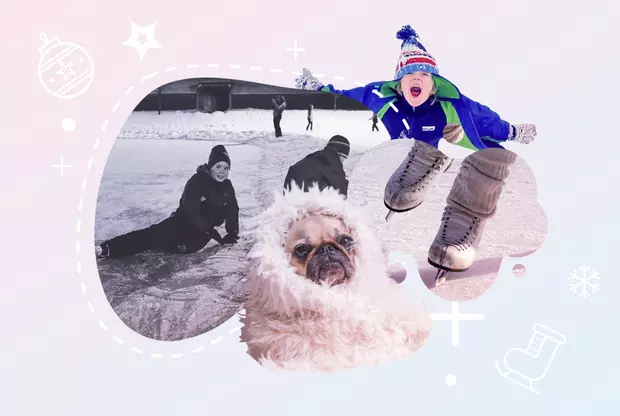
Checklist for winter walks with a child
Turn snow into water in a second
Does your child feel like the snow is melting too slowly? Well, you can speed up the process. To do this, take a bowl of hot water and add snow to it with a spoon. Loose snowballs will instantly turn into water.
Set fire to the snowball
Do you think it's the heat? Then let's make it more difficult. Make a dense snowball out of snow and try to heat it with a flame from a lighter. Here it is, it’s warm, but the snow doesn’t melt. The whole secret is not in the temperature of exposure to snow, but in the density of the snow itself! Dense snow will melt much slower than loose snow.
Turning boiling water into snow
View this post on Instagram
Publication from Dmitry Efremov (@djefremov)
If powdery snow can be melted in an instant, is it possible to turn water into snow without waiting next to the refrigerator? Yes, but to do this you will have to go outside or open a window when the temperature outside is sub-zero. Pour hot water into a glass and throw it up, spraying water into the air. Don't be afraid, the water will freeze instantly, so not a drop will fall to the ground.
Freezing soap bubbles
For this experiment, we suggest you take a jar of soap bubbles from your summer supplies and take it with you for a walk. Our experiment works best at temperatures from minus seven to minus ten degrees. Just blow soap bubbles and watch how quickly they freeze, becoming covered in subtle icy patterns.
Checking the temperature of the snow
We walked for half an hour and froze, and the child is surprised how bears sleep all winter under the snow and do not freeze, and in the spring primroses sprout under the snow cover? You will have the answer to this problem too. To solve this, take a thermometer with you on your walk.
At the beginning of the walk, stick it deeper into the snowdrift (don't forget to tie a bright thread to it so as not to lose it in the snow). When you go home, take it out and check what temperature it shows. Most likely, under the thick snow the temperature will be 10–15 degrees higher than outside. It turns out that snow can really warm you up.
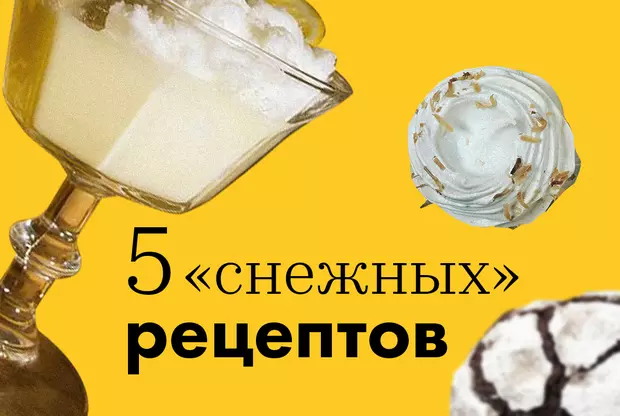
Does your child like to eat snow? Make him one of these desserts!
Discovering the secret of non-freezing water
Ordinary water freezes at sub-zero temperatures, so in winter, instead of rain, snow falls from the sky. But if you add two teaspoons of salt to a glass of water, it will not freeze even after a night in the freezer at a temperature of minus 20 degrees, while clean water will turn into a piece of ice during this time.
Take a sheet of dark paper, dip a brush in non-freezing water and make a small drawing. After drying, you will see that the entire drawing is covered with ice crystals. Invite your child to decorate New Year’s cards for grandparents with “snow drawings”.
Creative experiments with ice
For the following experiments you will need ice, table salt, paints and brushes. They can be carried out at any latitude without waiting for snowy weather.
Ice magic step
View this post on Instagram
Posted by Oksana Baidicheva (@baidichevaoksana)
For this experiment we need a large piece of ice from the freezer. Place it in a large, convenient container in which it will slowly melt. Next, invite your child to sprinkle table salt on the ice. Where the ice comes into contact with the salt, it will melt faster, forming narrow depressions. After that it’s time to take up the paints. Let your child paint his home “iceberg” as he wishes, watching how the salt eats away at the surface of the ice, and the paint penetrates into the depths and spreads beautifully inside the “glacier”.
Ice bombs
View this post on Instagram
Publication from Yulia Morozova (@juljamoroz)
In this experiment we will also make ice ourselves, but we will prepare it according to a special recipe.
Mix four tablespoons of baking soda, a little water, two or three drops of liquid soap and a little water to form a paste. To make the ice multi-colored, add food coloring to the resulting mass. Now we fill the ice molds with our paste. Inside each cell you can put a small toy or surprise. Then we put the ice molds in the freezer for several hours so that the bombs are completely frozen.
When everything is ready, we make a solution that activates the bombs by adding one tablespoon of citric acid to a glass of water.
Now the child’s task is to melt the colorful pieces of ice and find the surprises hidden in them using a syringe (without a needle) or a pipette with a special solution. When soda and citric acid come into contact, the ice pieces will hiss, foam and melt before your eyes.
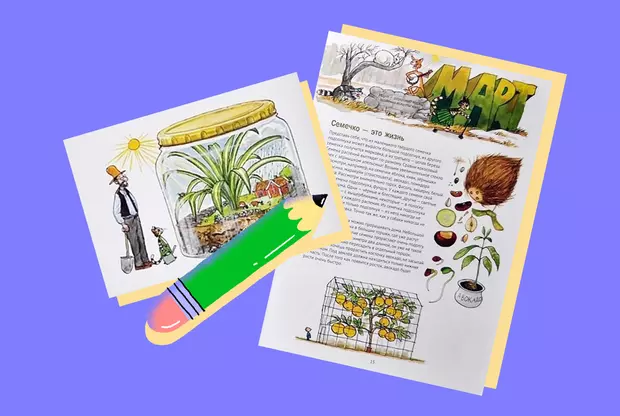
One year with Petson and Findus: recipes and crafts
Elsa's Secret
You can grow ice in an ordinary room, but for this we need a stand, a metal mug or jar, a spoon and salt.
Pour some water under a mug or jar, place ice or snow inside, add two teaspoons of salt and mix well. The snow in the cup will actively melt, taking heat from the surrounding space. The cup will instantly become icy, and after five to ten minutes an ice crust will form under it, so that the cup will not be so easy to tear off the stand.
Ice fishing
@d.kotiy
Ice fishing♬ original sound - Dasha Kotiy
For kids who love fishing, we offer the following simple experience. Take small pieces of ice from the freezer, a large container of water and a bright woolen thread. Throw the ice fish into the water, wet the thread, place the wool on top of the ice floes and sprinkle them with salt. In a couple of seconds, the salt will melt the ice, the thread will freeze to the piece of ice, and the baby will be able to pull the caught fish out of the water.
Making artificial snow
For those who don’t have snow yet, but already want to play with it, we offer several options on how you can create a snowdrift without leaving a dark room.
First recipe
@polinka_girla
Subscribe! Today I'm trying to make artificial snow. #I'm trying #with my own hands #experiment #diy #magic #likessubscription #snow #artificialsnow #winter♬ original sound - Polinka
Mix starch and shaving foam and mix with your hands. The consistency of the snow should be loose, but not wet. You can make a snowman from this snow or play with molds.
Second recipe
A more complicated option for those who do not believe in simple solutions. Take one glass of soda and starch each, mix with two tablespoons of liquid soap, gradually add water. As a result, we should get crumbly snow, reminiscent of cottage cheese in lumps.
You can make snowmen or Easter cakes from it. And if you drop a well-known solution with citric acid on them from a pipette, then everything will begin to hiss and foam.
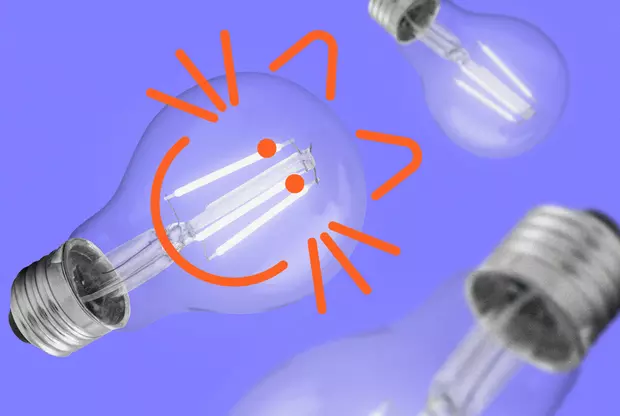
What can be made from light bulbs: 5 craft options
Third recipe
@maryam_flow
I bought artificial snow at Fix Price. Conducted an experiment.♬ original sound – Maryam/Dowsing
The easiest option to make artificial snow is to buy it in a store. It is sold in powder form, which is diluted with water. The resulting snow does not stick to your hands and is similar in consistency and properties to kinetic sand.
By the way, the powder from the bag is the same one that can be found in a diaper if you cut it and rummage through the cotton wool.
More reading on the topic:
From snowflakes to zombies: 11 board games about winter and New Year for children and adults
Watch with the whole family: 10 domestic cartoons about New Year and Christmas
8 things to help parents stay warm on winter walks

Where did the snow go?
Collect some snow, bring it into a warm room and put it in a deep plate. Leave for a while until it melts. Draw the child's attention to how much snow there was initially and how little water was left after.
Where did the snow go? The children assume that it evaporates. But it's not that. There are the same number of water molecules left. Only the state of aggregation changes. Snow is 95% air. Snowflakes cannot fit too tightly together, and therefore take up more space. But in water there are no such gaps between the molecules; accordingly, it occupies a much smaller volume.
This can be clearly shown using toys as an example. If you fold them neatly, they will take up less space than if thrown randomly.
The experience with snow is quite simple, but causes a lot of surprise in children. At the end of the experiment, you can examine the sediment that remains in the water.
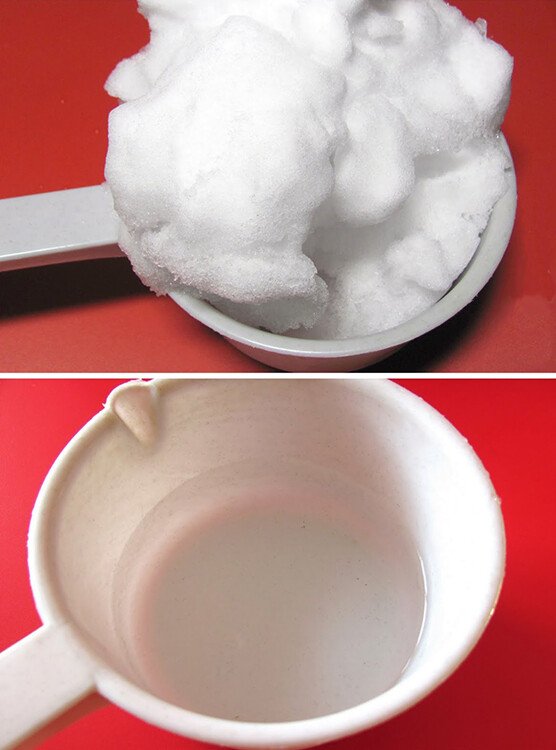
Newly fallen snow taken from the forest will turn out to be more or less clean. But if you took it from the road, then dirt at the bottom cannot be avoided. Perhaps the sight of such water will discourage a child from tasting snow.
Snow flowers
Experiment number 3. For this, prepare a soap solution and a straw. By the time the experiment begins, children should already know that snowflakes are microscopic crystals, the formation of which occurs in clouds in cold weather. The purpose of our experience will be precisely to see how this happens.
To carry it out, you need to leave the room on a clear, frosty day (the air temperature should be quite low). Almost all experiments with ice or snow outdoors require cold weather - nothing will work during a thaw.
Try blowing a large soap bubble through a straw. Snow “flowers” will form under a thin layer of film and grow right before your eyes.
At the same time, it is worth demonstrating to children the process of frost formation. It’s even easier to do this - when it’s cold, we take a cup of boiling water with us outside and cover it with something metal, for example, a saucepan lid. Droplets of steam from boiling water will settle on it and quickly turn into frost crystals in the frosty air.
Which snow will melt faster: dense or loose?
For this experiment you will need two pieces of snow of equal volume. Leave one loose and squeeze the other into a ball. Place in two different plates. Which piece will melt faster?
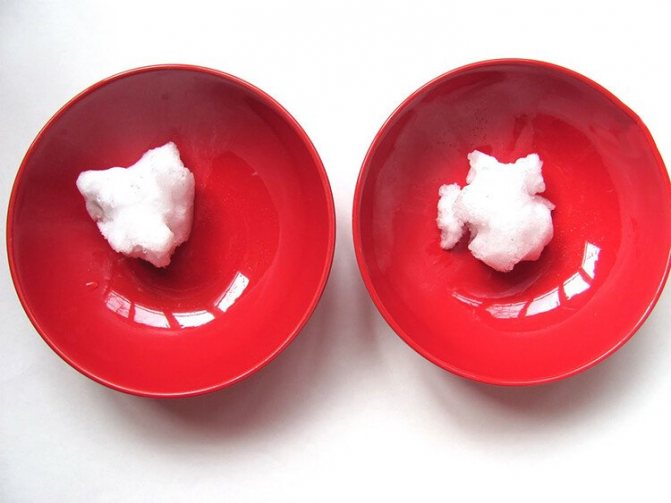
If a child carefully observes the process, he will see that loose snow turns into water faster. What is this connected with? It's all about the distance between the snowflakes. Where the snow is loose, there are more gaps, which means warm air penetrates inside. The second, dense piece is warmed only from the outside, so it melts more slowly.
Fourth experiment "The Ice Man"
To carry out this experiment, we needed an ordinary piece of ice. First, we sprinkled the ice with salt. The salt corroded the ice and passages and labyrinths formed. To get a better look at them, we took paints and brushes and started painting on the ice.
The girls liked the process so much that they took a few more pieces of ice.
At first they just painted the ice on top, but Lisa decided to paint on the sides as well.
The result is a funny “Ice Man”.
Why did this happen? The freezing point of water is higher than the freezing point of a saline solution, so when we sprinkle salt on ice, a salt solution is obtained on the melted surface of the ice. The freezing point of this solution is lower, so the ice begins to melt.
We decided to stop there, but we liked the experiments so much that we decided to return to this exciting process later.
Studying snowflakes
This experiment can be carried out on a windless day when it is snowing. You will need dark fabric or colored paper, a magnifying glass, and a camera. Catch a few snowflakes on paper and examine them with a magnifying glass. Mittens will not work because... the snow will quickly melt from the warmth of your hands. Then turn on the macro mode on your camera and take a few shots of snowflakes. Please note that they are all different from each other.
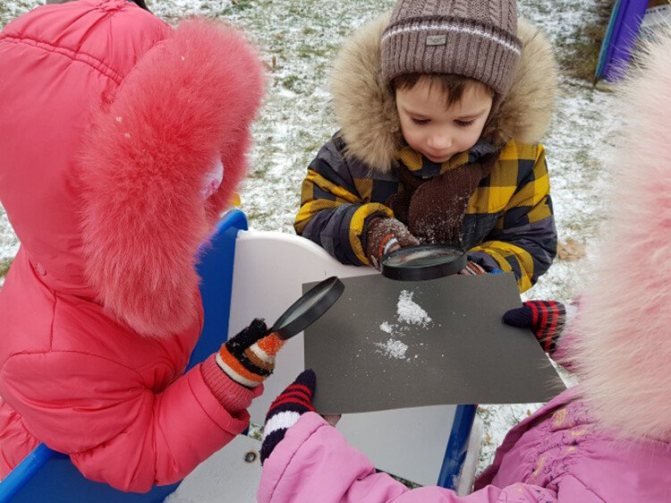
This was discovered by the scientist Kenneth Libbrecht, who studied the structure of crystals and created the largest collection of photographs of snowflakes in the world. None of them were repeated. Until now, no one has been able to refute his theory. I wonder if you can find twin snowflakes?
Third experiment “Drawing with colored ice floes”
For this experiment we took several containers, paints and brushes. Colored water was made in each jar. Along the way, we conducted an experiment in mixing colors. Nastya mixed red and yellow - the color turned out to be orange. Place the colored water in the freezer until completely frozen.
After the “ice paints” were prepared, the girls took a sheet of white paper and drew pictures.
Why did this happen? Colored pieces of ice are drawn on paper because they contain paint and water. Only, unlike ordinary drawing, the water and paint are in a frozen state, which does not interfere with the creative process.
How many degrees is there under the snow?
And checking this is not so difficult. Take a thermometer and go outside. Outside, measuring the snow will not be difficult. You just need to stick a thermometer into it and wait a little. The temperature will be almost the same as outside.
But how can you find out how many degrees there are under a large snowdrift? You need to try to lower the thermometer as low to the ground as possible. And so that it doesn’t get lost and you don’t have to dig up the entire snowdrift, tie a thread to it, preferably bright and tight, and leave it at the top.
The effect of salt on snow
Tell your child that you can sprinkle salt on it to help the snow melt faster. This is exactly what workers do when cleaning highways. Of course, they use industrial salt, but ordinary salt is also suitable for the experiment: table salt or sea salt.
Collect and place snow in two containers. Leave one aside, sprinkle the other with salt. Observe where the snow melts faster. For clarity, record the start and end times of the experiment.
